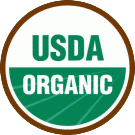Order products!
About our farm
Farm blog
Why grass fed?
Why organic?
Why soy-free?
Why eat local?
Our difference
FAQ's
Bone broth
Organic chicken
Organic eggs
Organic pork
Frozen is Fresher
Testimonials
Recipes
Contact us

From our family to yours...
We are a 100%-owned family farm, so you can rest assured that everything that bears our name is produced on our farm with the greatest attention to every detail.
You see, we truly care about the health of our family, and we care about yours too.
Our mission is to provide families with truly healthy meat.

Why soy-free?
One of the reasons people buy from us is that we produce soy-free meat and eggs. They want to remove soy from their diets. They may also believe that soy-free food is more healthful or ethical. We agree with their reasoning. But is there more to the story?
Years ago, when we chose to raise our farm animals soy-free, our motivation was that we felt soy was an unnatural food for animals to eat. Since soybeans in their raw state are mostly unpalatable to animals (soybeans need to be roasted in order for animals to digest them properly) we felt that it went against logic to try to feed animals soy.
Raw soybeans contain high levels of anti-nutrients which interfere with digestion, and the only way to reduce the anti-nutrients is through roasting, soaking, or fermentation. Animals in the wild obviously do not prepare their food this way. So, feeding animals soy is to feed them something which they are not designed to eat. At least, that is how we see it.
Our motivation was therefore from a humane perspective. If we are going to raise livestock, then we believe it is our responsibility to raise them in a way consistent with how they were designed to function. All we need to do is look at their wild cousins (wild buffalo, feral pigs, jungle fowl) and observe what they eat and how they live naturally, and use this as our guide.
Years ago, when we spoke to other farmers and said we were going soy-free, they said "You're brave" --- because all farms feed soy to their animals, almost without exception. Layer chickens are fed soy. Meat chickens are fed soy. Pigs are fed soy. Dairy cows are fed soy. Beef cows are fed soy. Why? Because soy is relatively inexpensive, and very high in protein.
Modern livestock production has become dependent on soy. Therefore to remove soy from the food chain is, to most industry people, unthinkable.
For us, it was a simple thing to make sure our beef cows never got soy --- we only ever gave them grass anyway (or, when the pastures go dormant in the winter, dried gas, i.e. hay). Cows are easy that way. Pigs however are not ruminants, and although they do eat grass to an extent, they are monogastric and therefore meant to eat other things, such as roots, bugs, and seeds. Chickens are neither ruminants nor monogastric (the avian digestive system is unique to birds), but they are designed to primarily eat seeds, bugs, and some types of plant material. Chickens do eat grass (they love it in limited amounts) but the bulk of their focus is to forage on seeds and bugs, with lesser amounts of plant material such as leaves, grass, berries, or flowers.
To go soy-free means that the animals grow more slowly or, in the case of layer chickens, produce fewer eggs. Why? Because their bodies are not being flooded with soy-protein. Soy-protein, when roasted, is very bioavailable and causes animals to grow more rapidly (or produce more eggs). But it comes at a cost. Soy-fed animals (in our view) grow too rapidly, and produce too many eggs.
Because soy-fed animals are pushed to rapidly produce, their lives are much shorter than they would be otherwise. A typical indoor soy-fed pig is ready to be slaughtered at around 5 months old, whereas an outdoor soy-free pig might take twice that long to raise. A soy-fed meat chicken is ready for slaughter at about 6 weeks, whereas a soy-free pastured meat chicken might take about 9 weeks (or longer) to raise. A soy-fed layer chicken will normally be culled when she is a little more than a year old, whereas a soy-free outdoor layer chicken will often be happy and productive for three or four years.
Because soy-fed livestock animals live such shortened lives, chronic health issues are less observable but are nonetheless present. Lung damage develops in soy-fed indoor pigs (due to high ammonia levels in the air) but does not usually result in death because the pig is slaughtered before the damage becomes fatal. Soy-fed meat chickens develop joint problems but are usually slaughtered before the problems turn into crippling arthritis. Soy-fed layer chickens, by the time they are a year old, often have arthritis and ovarian cancer, but they are culled before the issues cause death. These health issues are unseen by the consumer and not considered a major issue by the livestock industry because the animals are killed before the diseases are fatal. But if consumers knew they were eating the eggs and meat of animals which are chronically unhealthy, would they be comfortable with that?
The problems are equally, if not more severe, in soy-fed dairy cows and beef cows. Cows, being ruminants, are designed to eat grass. Pushing them to produce more milk and meat by feeding them soy-protein and grain is unnatural and contrary to their design. A soy-fed dairy cow is typically culled by the time she is around 5 years old. A soy-fed beef cow is slaughtered around 18 months old. In both instances, the soy-fed cows are pushed so hard to produce that they need to be given subtherapeutic levels of antibiotics to keep infection at bay and to promote growth, for at least a portion of their lives. Subtherapeutic antibiotics are given at a low dose, and not always detectable in the resulting meat or milk, which is why they are used so commonly with little or no awareness on the part of the consumer.
As a side note, subtherapeutic antibiotics are also given to conventionally-raised pigs, and also to layer and meat chickens at the chick stage. Subtherapeutic antibiotics account for about 90 percent of the antibiotics used in the livestock industry. When you hear someone claim that a conventionally raised livestock animal is antibiotic free, they are referring to therapeutic antibiotics, not subtherapeutic antibiotics which are present in the feed at low doses for at least a portion of the animal's life.
Antibiotics and soy therefore go hand-in-hand. Soy is fed to livestock animals in order to push them to produce too much, too fast. This results in health issues, causing farmers to resort to liberal usage of subtherapeutic antibiotics.
As another example of the detrimental effects of pushing livestock animals too hard, consider the layer chicken. When a hen produces an egg, it causes inflammation in her reproductive system (as would be expected --- it is like giving birth). She needs time to recover after laying an egg. So, when we remove soy from her diet, her egg production will drop, yet that is helpful to her health, and she will live longer. Yes, her egg production is lower. But her life is important, isn't it?
Meat chickens which are fed soy will grow rapidly, but at considerable cost to their health and the flavor and texture of their meat. When a meat chicken grows too rapidly, its organs and skeletal structure are sometimes unable to sustain its fast muscle gain, resulting in hip problems and heart problems. Its organs and skeletal structure are not able to keep up with its muscle growth. Plus, the chicken's muscles are not given time to develop firmness or nutrient density, resulting in squishy meat which is lacking in flavor and nutrition.
However, when meat chickens are raised without soy, they grow at a substantially slower rate. Because they are older at slaughter, their meat has better texture, and is higher in nutrient density because the chicken has longer to store nutrients in its meat and fat. Plus their slower growth results in fewer hip and heart problems. Also, because they take longer to grow, they live longer lives and tend to put on more fat, but this is beneficial, as fat contributes to the flavor of the meat. So the result is a healthier chicken which lives longer and provides healthier, more flavorful meat.
What about pigs? An indoor, soy-fed pig has an absence of vitamins A and D in its fat, and also has a low body fat score. But a soy-free outdoor pig will grow more slowly. It will also, proportionately, have more fat, and the increased fat improves the flavor of its meat. And, because the fat of outdoor pigs is healthy monounsaturated fat, rich in vitamins A and D, it is beneficial to us. In our view, the main reason for eating pork is so that we can benefit from the high vitamin A and D content and healthy monounsaturated fat it contains. But these things are absent in a pig which is raised indoors on soy.
As to the other benefits of soy-free livestock animals, the fatty acid profile of the resulting meat and eggs improves when soy is removed and replaced with green plant material. The benefits of grass-only beef are widely known, as the fatty acid profile of a grass-only beef cow is vastly different than a grain-fed animal. This is because eating grass (exclusively) results in much higher tissue levels of omega 3 fatty acids relative to omega 6. The same is true in pigs, meat chickens, and layer chickens. By removing soy from their diets and replacing it with more green plant material, the fatty acid ratio improves, resulting in better health for the animal and more nutritious eggs and meat for us.
When animals consume fatty acids, they tend to store a portion of those fats in their tissues. If they consume large quantities of polyunsaturated fats, their tissues tend to concentrate those polyunsaturated fats. When a chicken eats soy (which is heavily skewed toward omega 6 fatty acids) the chicken will produce eggs and meat which are higher in omega 6 fatty acids (and lower in monounsaturated fat). This has been shown by university researchers, and you can learn more about the study they conducted here.
It is also known that soy-fed animals have soy residue in both their meat and eggs. A study (Quantification of Soy Isoflavones in Commercial Eggs and Their Transfer From Poultry Feed Into Eggs and Tissues, Dante Miguel Marcial Vargas Galdos, Ohio State University 2009) demonstrated that chickens fed a diet containing soy have detectable levels of soy isoflavones in both their eggs and their muscle tissue. This is especially important for those people who are soy-sensitive.
Soy-sensitivity seems to be increasingly common in people, sometimes resulting in severe reactions. Yet even those of us who are not specifically allergic to soy are eliminating soy from our diets because we are concerned about the health impact. The Weston Price Foundation has produced abundant resources warning about the health risks of soy.
So, we've shared with you the main reasons why our animals are soy-free. For us, the first reason is the humane aspect. The second reason is the human health aspect. We want to share these reasons with you, our customers and friends, to help you. We believe that it is beneficial to animals and humans to dramatically reduce the amount of soy in the food supply. To our knowledge, we are one of the only sources in Canada for soy-free meat and eggs, which are also certified organic and certified humane.
Yes, it costs more to raise soy-free animals. But does it really? The benefit to both animal and human health more than outweighs the increased cost of going soy-free, in our view. Thank you for being willing to support our local, certified organic, certified humane farm.



